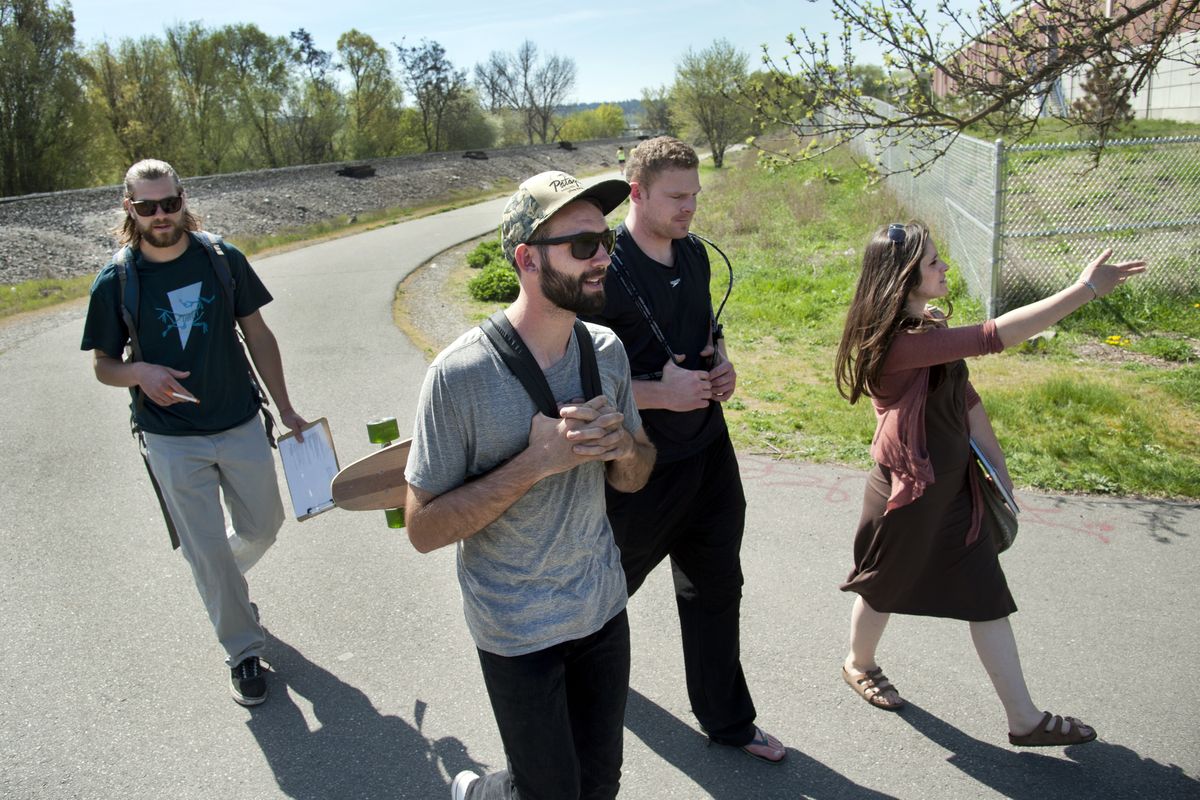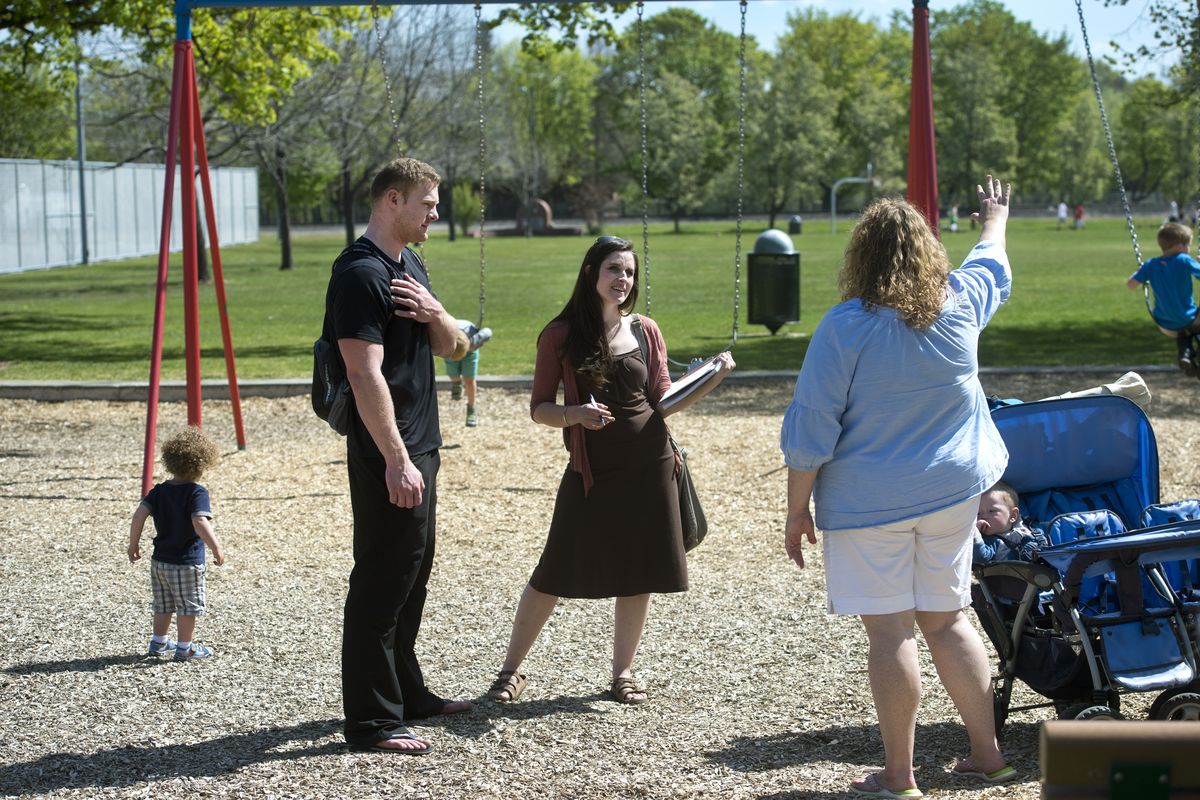Gonzaga reaching out to Logan area community
Gonzaga University environmental studies students, from left, Scott Eisele, John Stember Jake Wood and Emily Fulp walk the Centennial Trail near Mission Park on April 21 looking for residents of the Logan neighborhood. They had survey questions prepared as part of an outreach effort in which they are currently identifying community assets. (Dan Pelle)Buy a print of this photo
Gonzaga University students and staff are reaching out to the neighborhoods around the university to offer help building a stronger, thriving community.
An interdisciplinary team is working with the community to create an asset map of Logan and adjacent neighborhoods, said Mary Joan Hahn, director of community and public relations at GU.
The project is part of a growing movement for community-building that engages local residents to define themselves and then provides support to move ahead.
At the same time, students involved in the engagement are getting a close-up look at the real world – the kinds of strengths and challenges they will encounter as they move into careers.
The work this semester is an extension of Gonzaga’s longstanding commitment to service learning, said Sima Thorpe, senior director of external relations and student development.
“It takes the community, in this case, to educate a college student,” she said.
Last week, a group of students in GU’s environmental affairs program set out on foot to talk with residents about the natural assets along the Spokane River, including the Centennial Trail and river shoreline.
John Stember, a senior from Portland, said collaboration between GU and the neighborhood has been lacking in the past.
The group met Alicia Davies, a resident of Logan Neighborhood, at the Mission Park playground and invited her to a community café later that day at a doughnut shop.
The students are trying to find out what’s important to the neighborhood and include it in a larger, more comprehensive asset map of the area.
“The more involved GU can be in the neighborhood, the better it is for all of us,” Davies said.
Thorpe said community engagement has long been a part of GU’s mission.
The Neighborhood Assets and Promoting Strengths Project has 10 faculty members involved. The principal investigators are Thorpe and Dean Vincent Alfonso of the School of Education.
The map is expected to document all kinds of assets – the culture, the stories, the local economy, physical environment, individual talents and skills, educational resources and local associations and groups.
The project is working with the Northeast Community Center, Spokane Public Schools, Communities in Schools, United Way of Spokane, Spokane County Regional Health District, the Spokane Neighborhood Association and others.
Jean Farmer, executive director of the Northeast Community Center, said the project “will help identify some of those resources that can help families.”
She said it should be of particular benefit to local nonprofit groups as they reach out to pockets of the community in need.
At the same time, by bringing local residents into the community-building aspect of the project, it will offer those residents a sense that they are invested in the bigger picture.
The objective is to engage the community and use what is learned from residents to provide direction.
“We hope it will bring people together who care about the same issues,” Thorpe said.
The project has already learned from local businesses that hunger is an issue for children in the Logan Neighborhood, and there are early discussions about how to help alleviate the problem as a community, Thorpe said.
A faculty member on the project has students doing interviews with 200 neighborhood parents.
At Shaw and Garry middle schools, the group is asking students to interview their parents.
A key question for the project is finding out if there is more need for early childhood care.
Logan residents have already expressed an interest in organizing an annual block party, Thorpe said.
The work has led to a new class in grass-roots organizing.
The 18-month project started last August with a $50,000 grant from the Raskob Foundation.
Under the grant, the project plans to complete an interactive neighborhood map that will be hosted on GU computer servers.
In addition, GU is planning three town hall meetings to gauge community ideas and share information, as well as a series of smaller community cafés.
“This is what I believe we should be doing as part of our mission,” Alfonso said.

